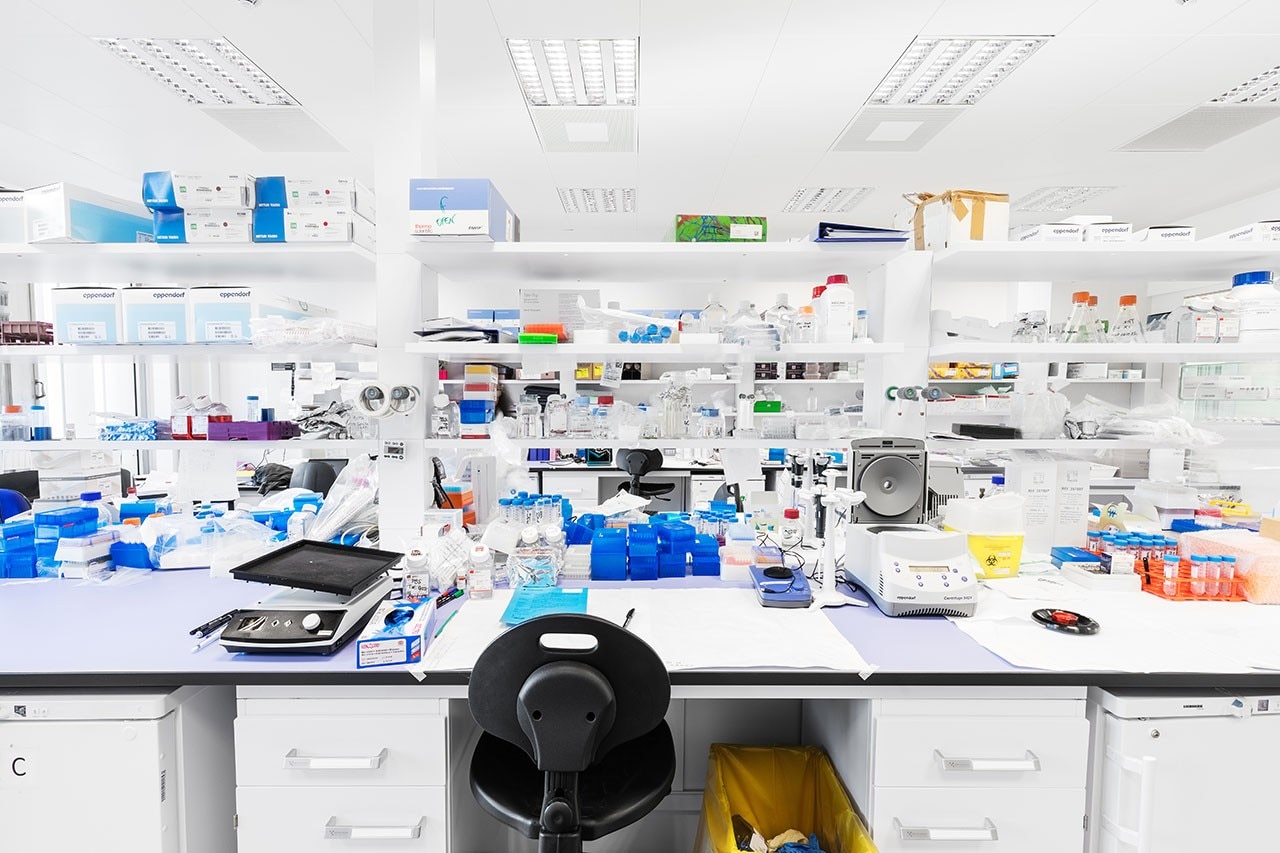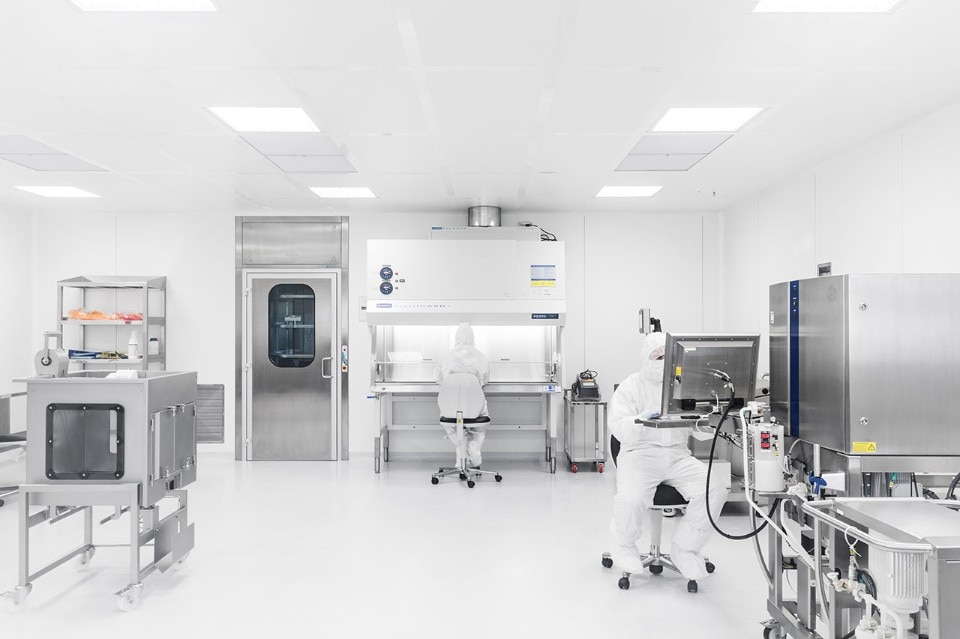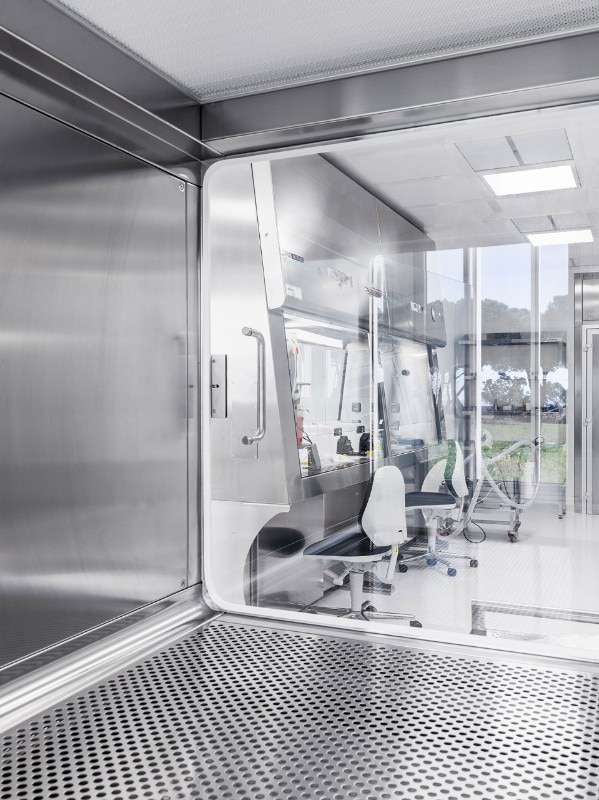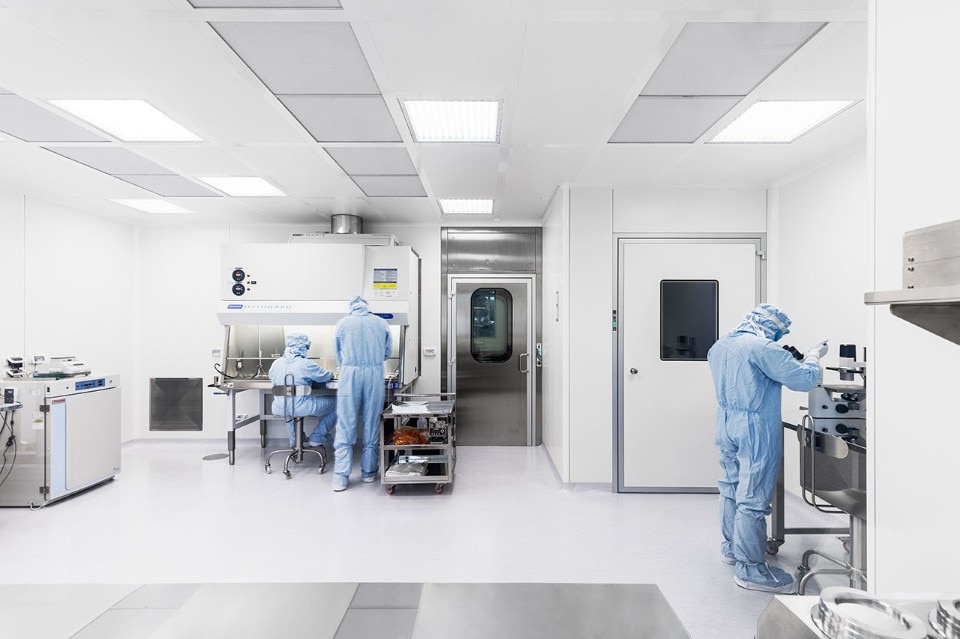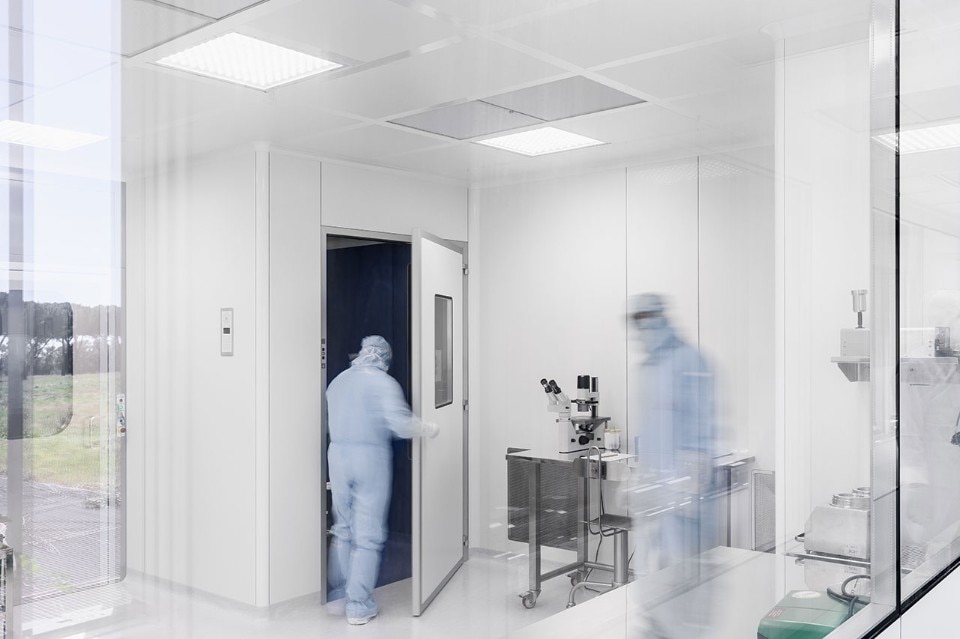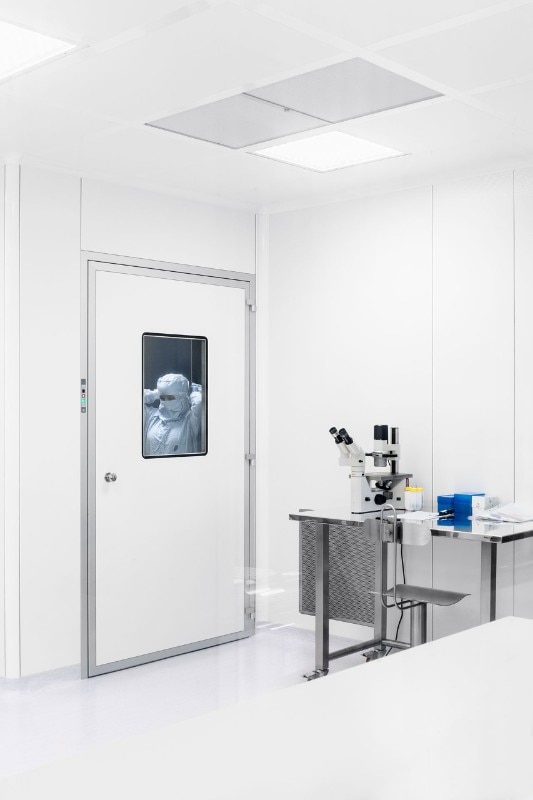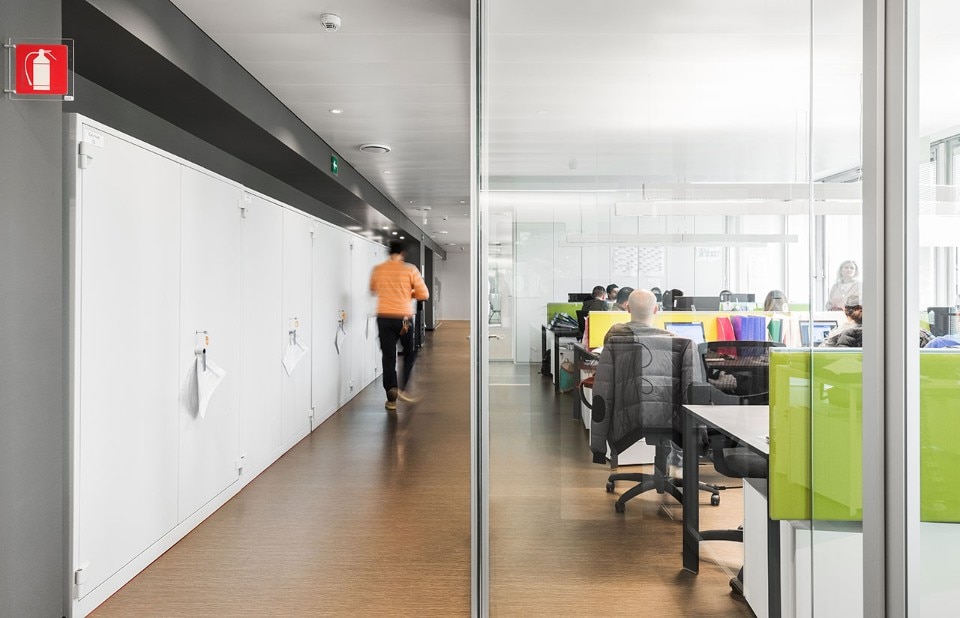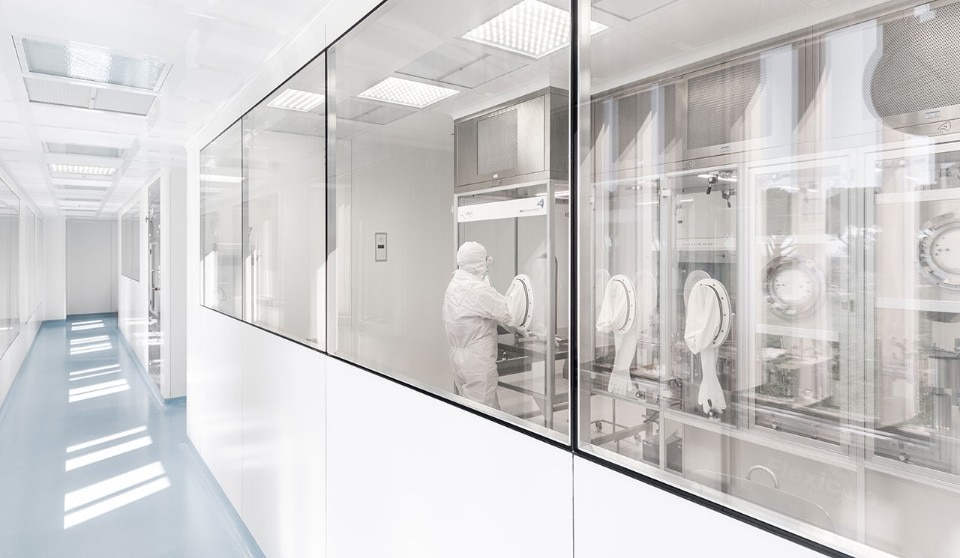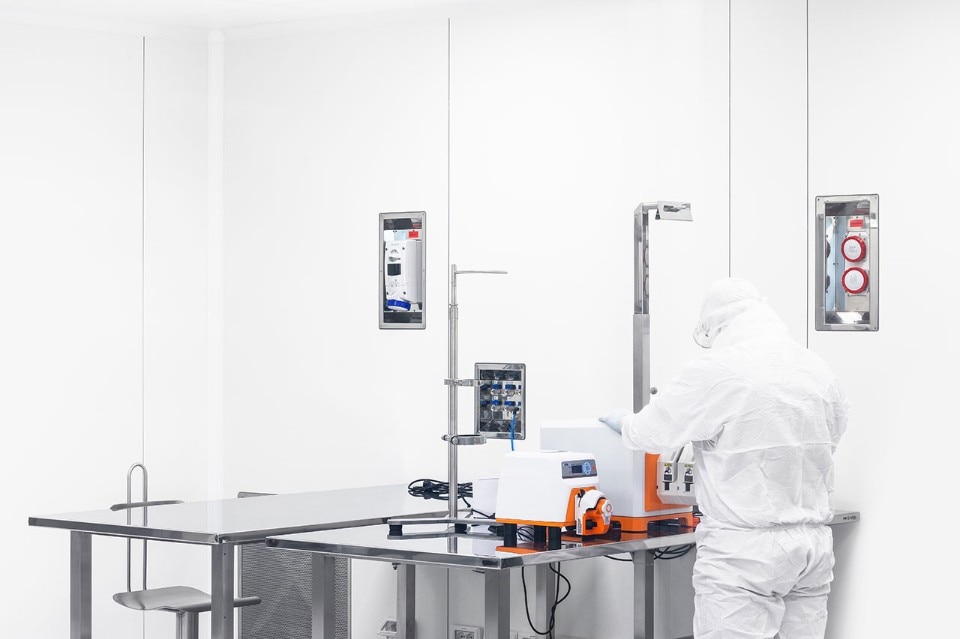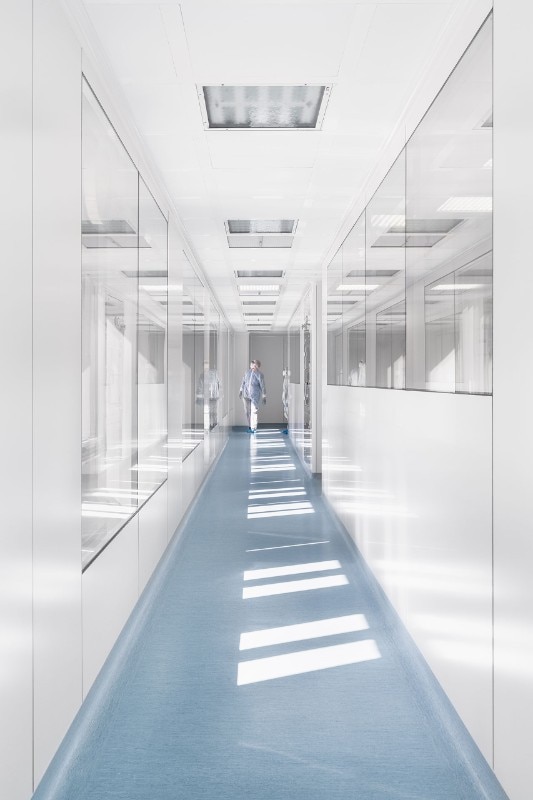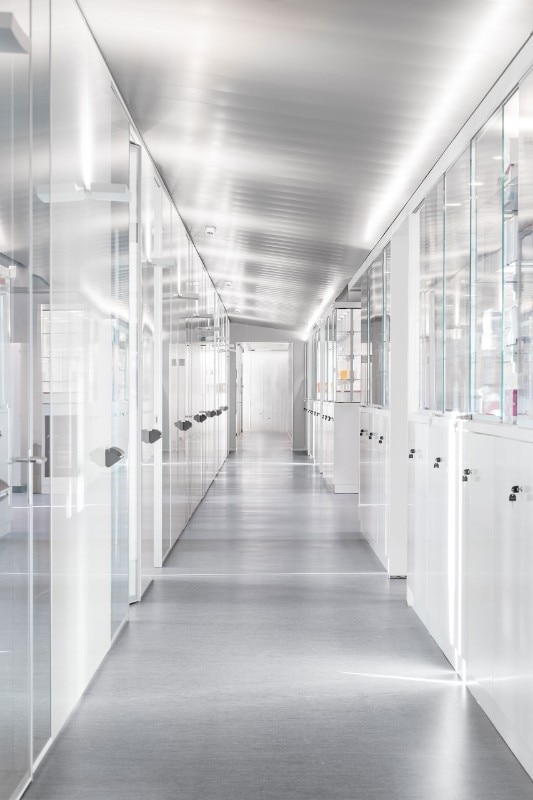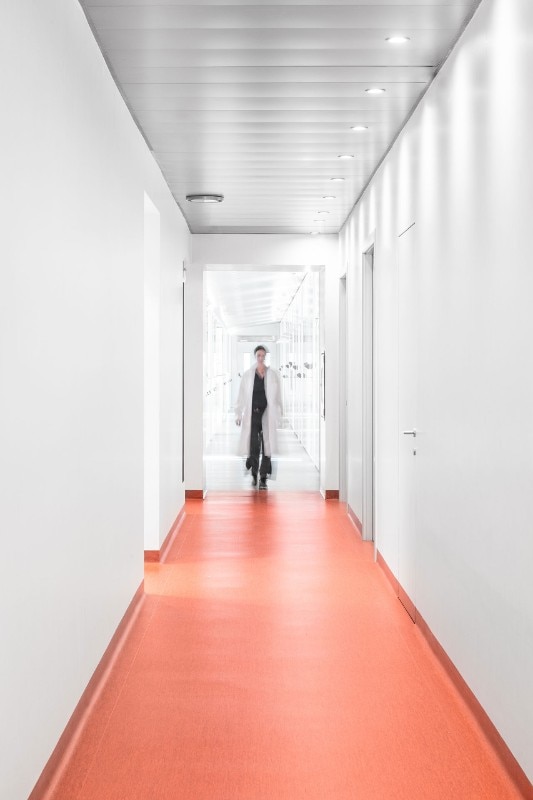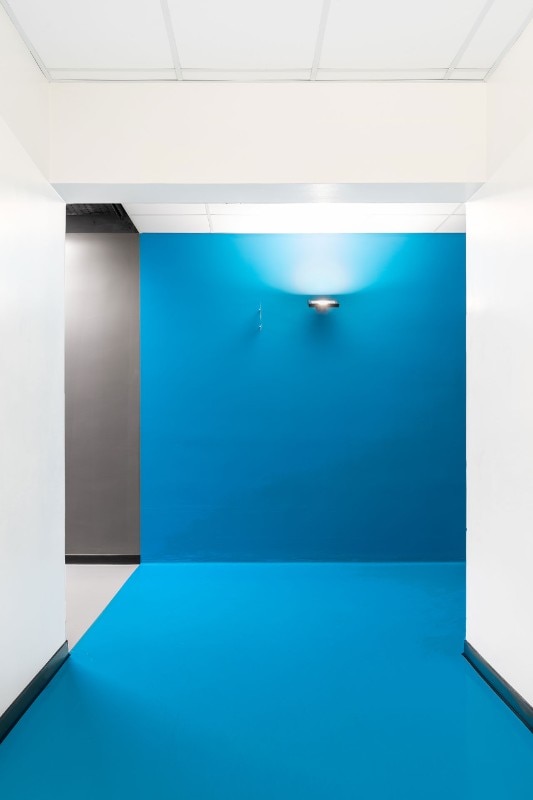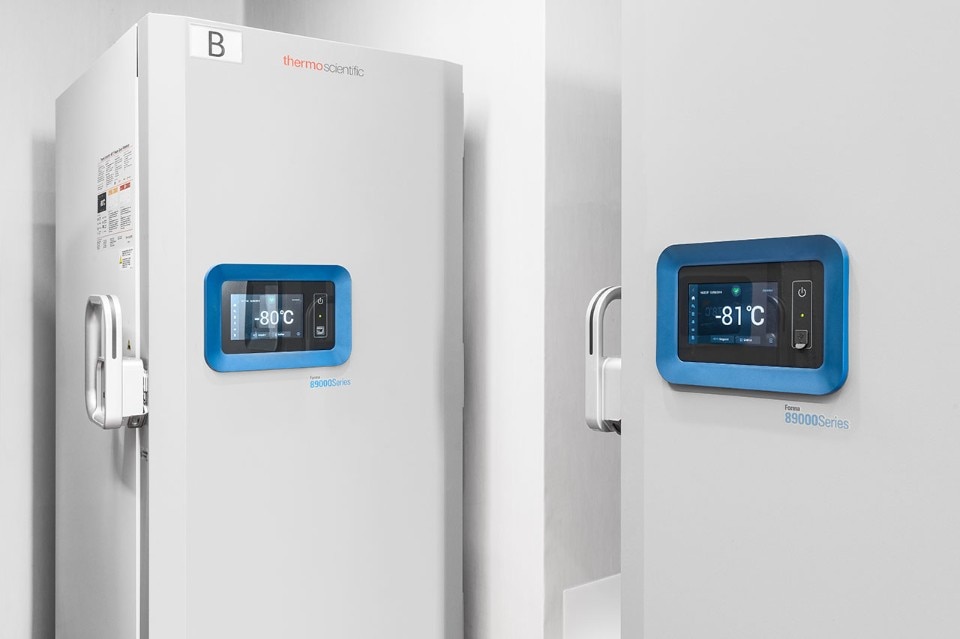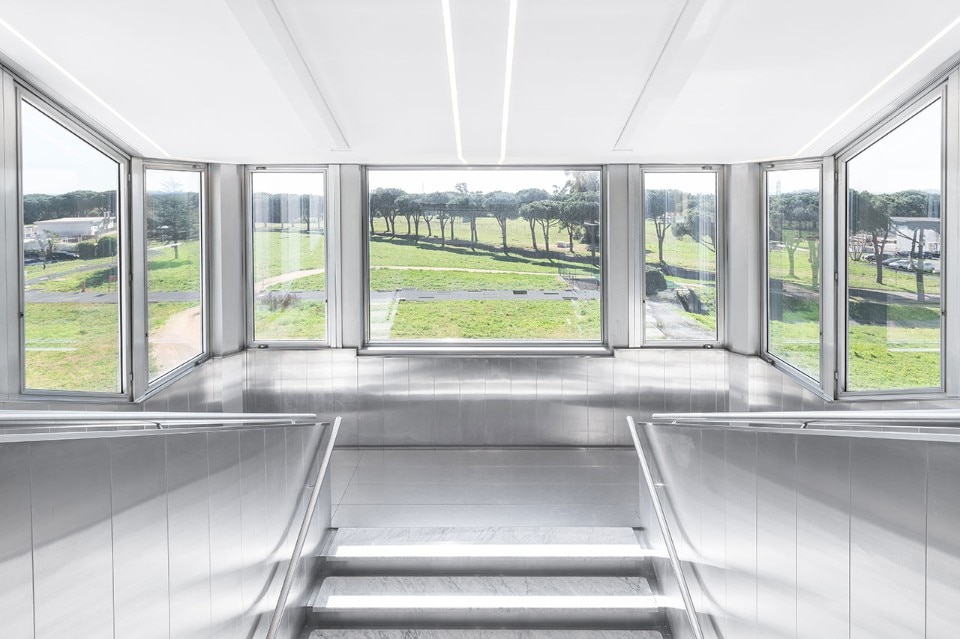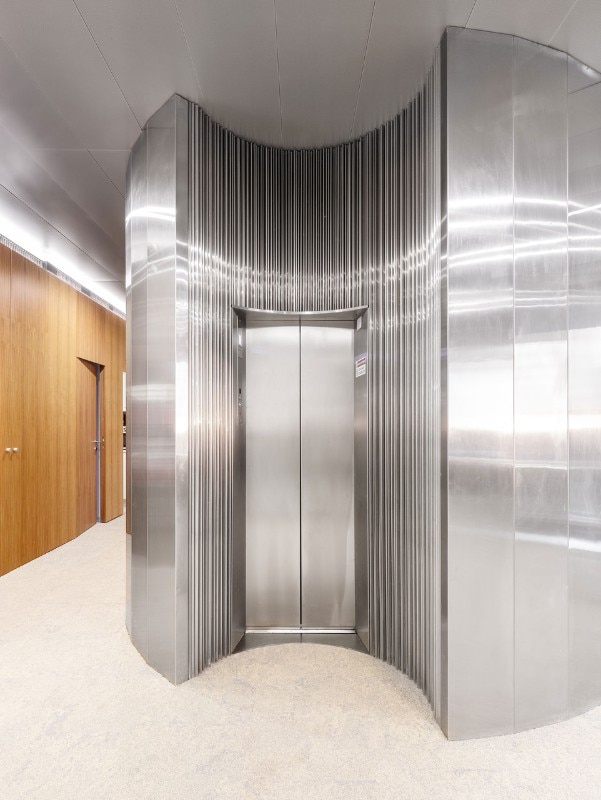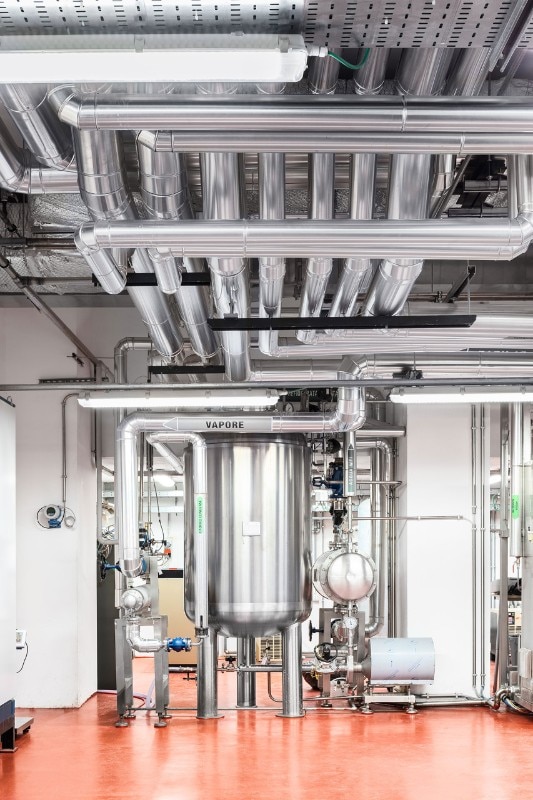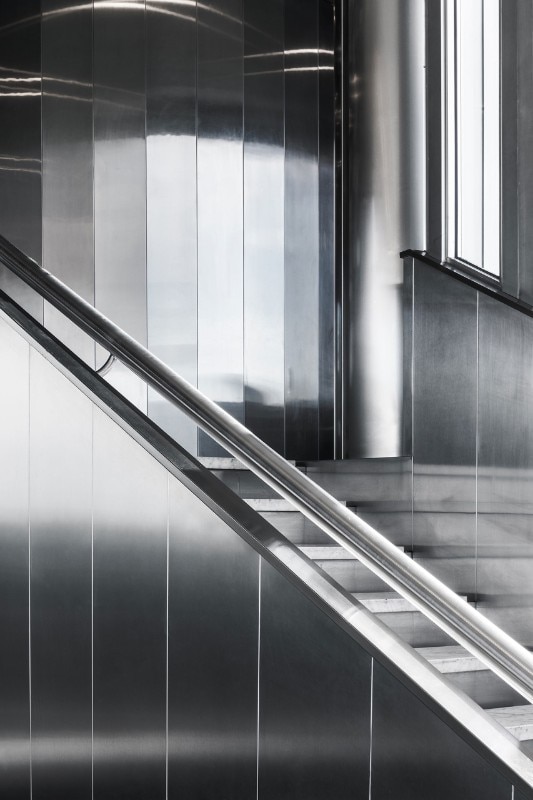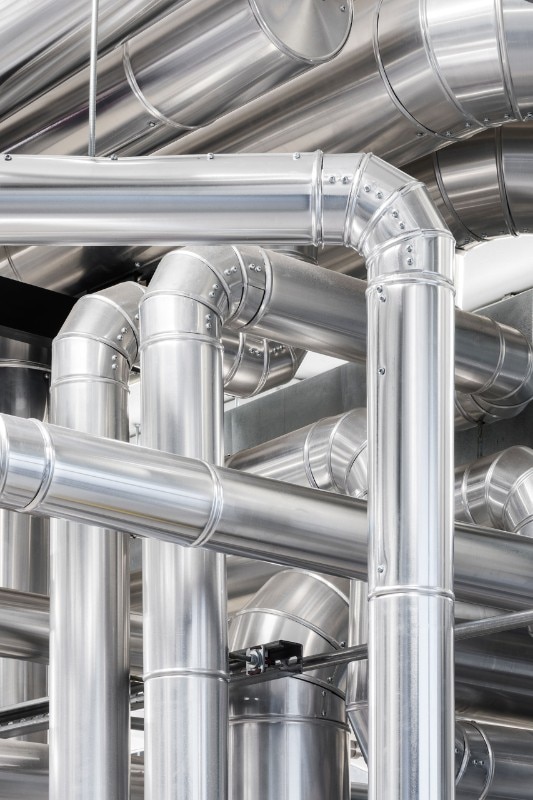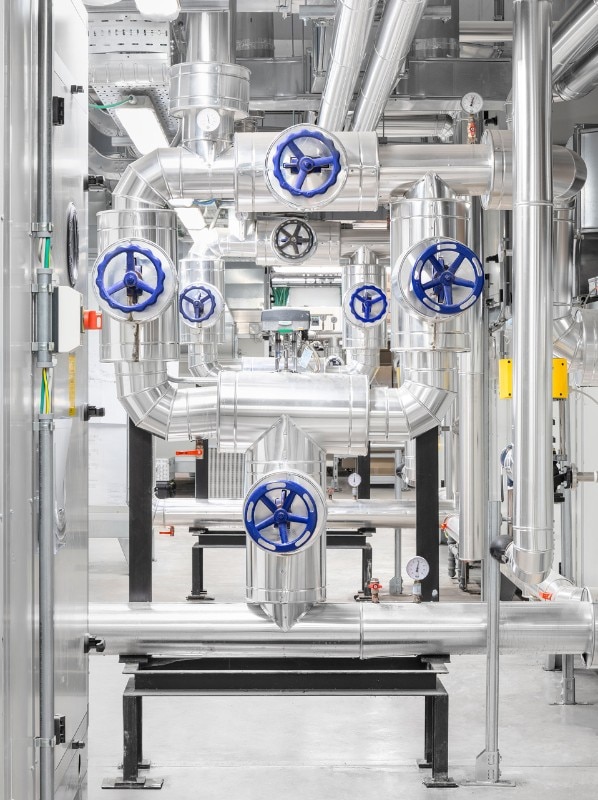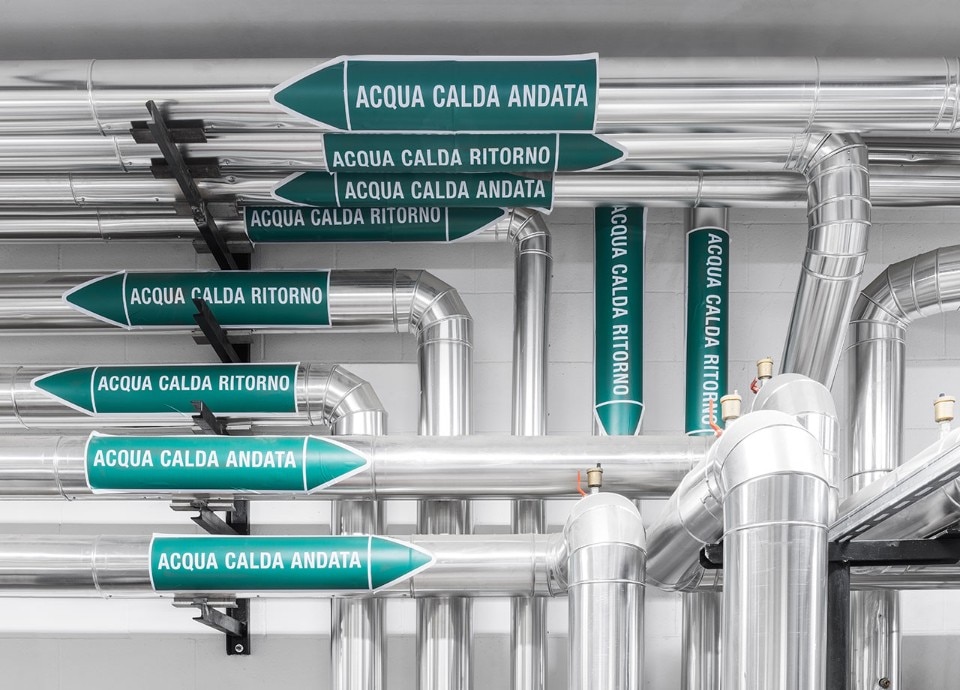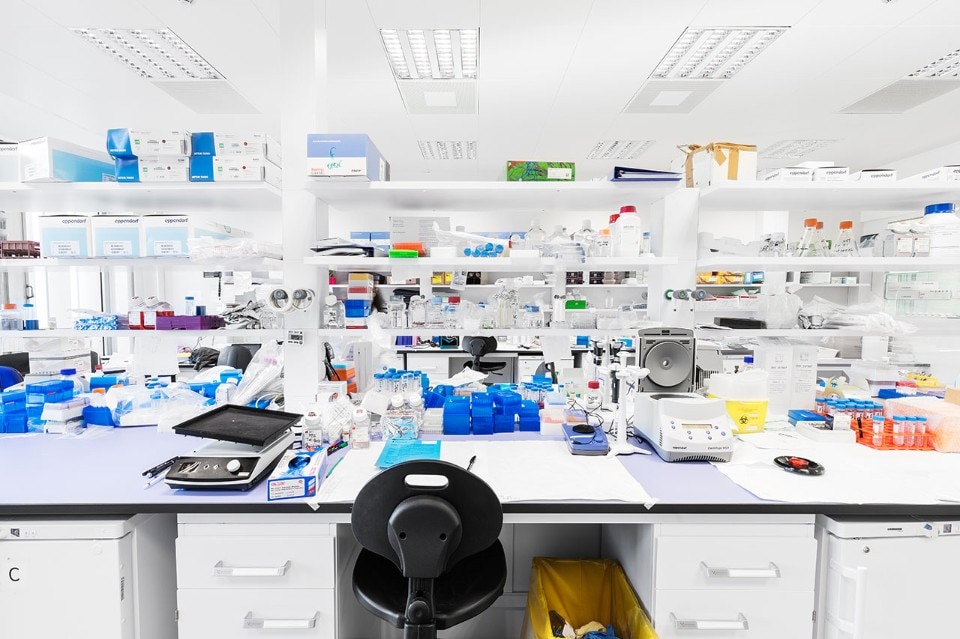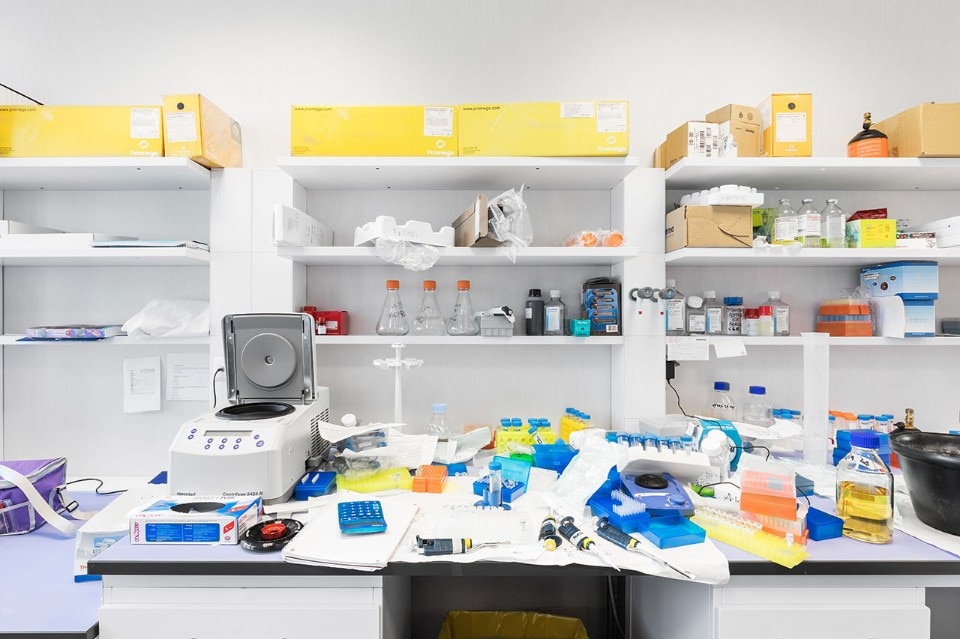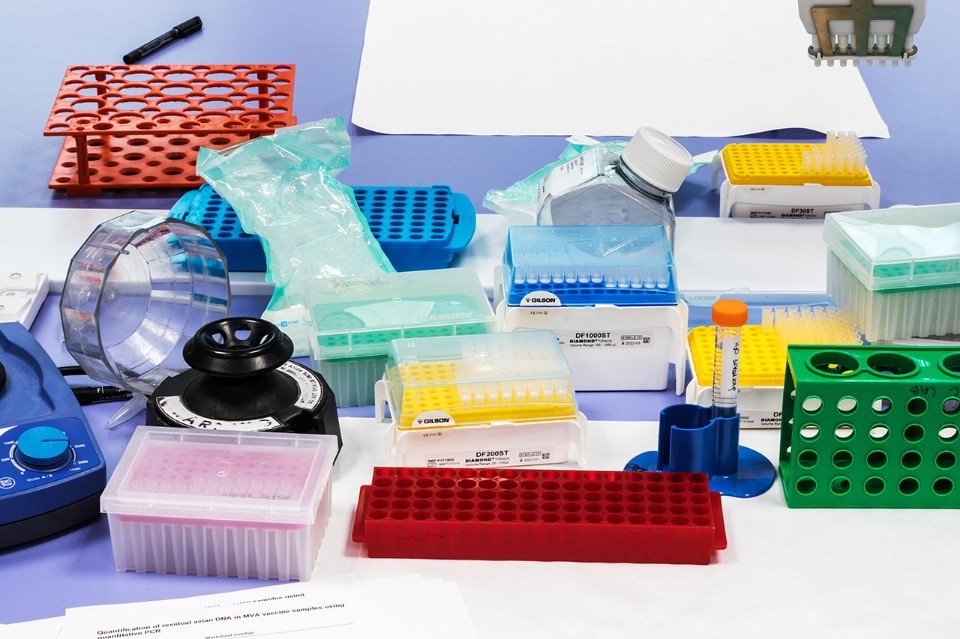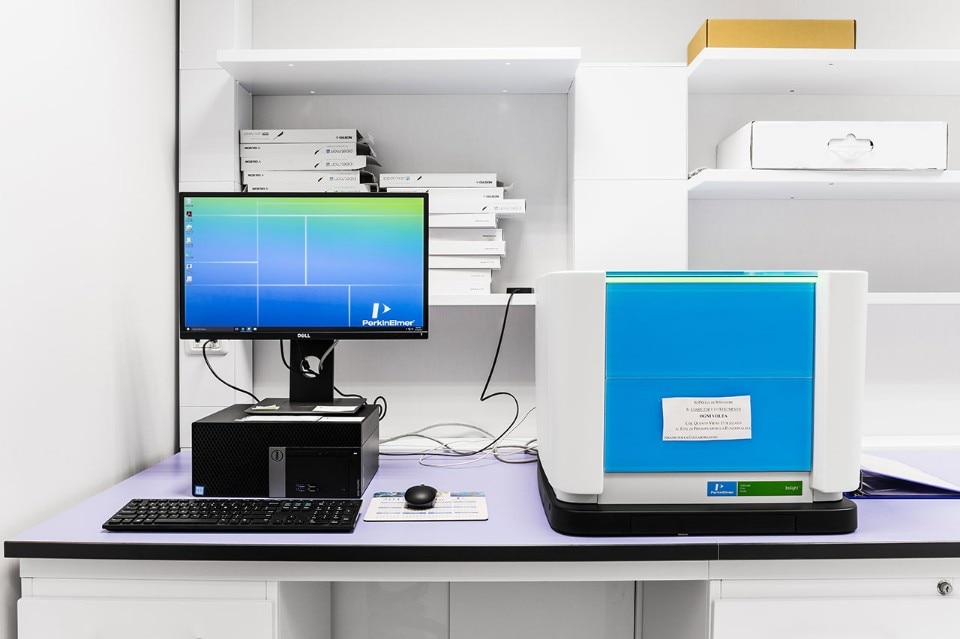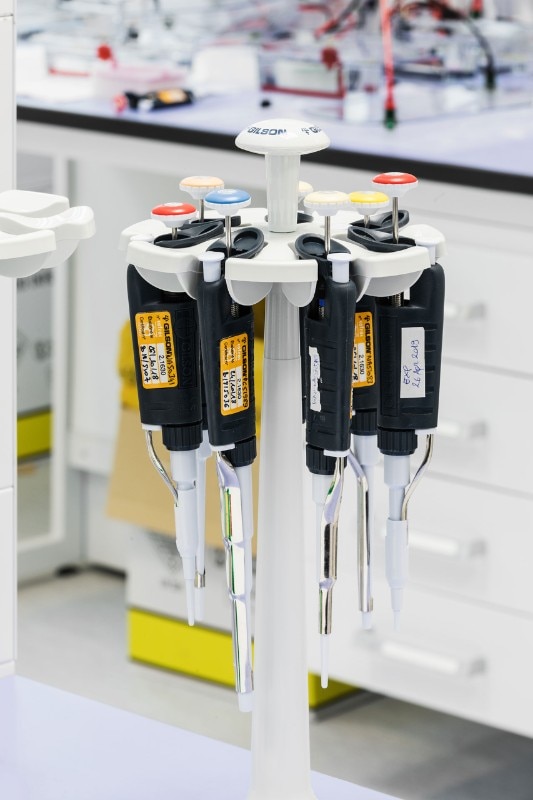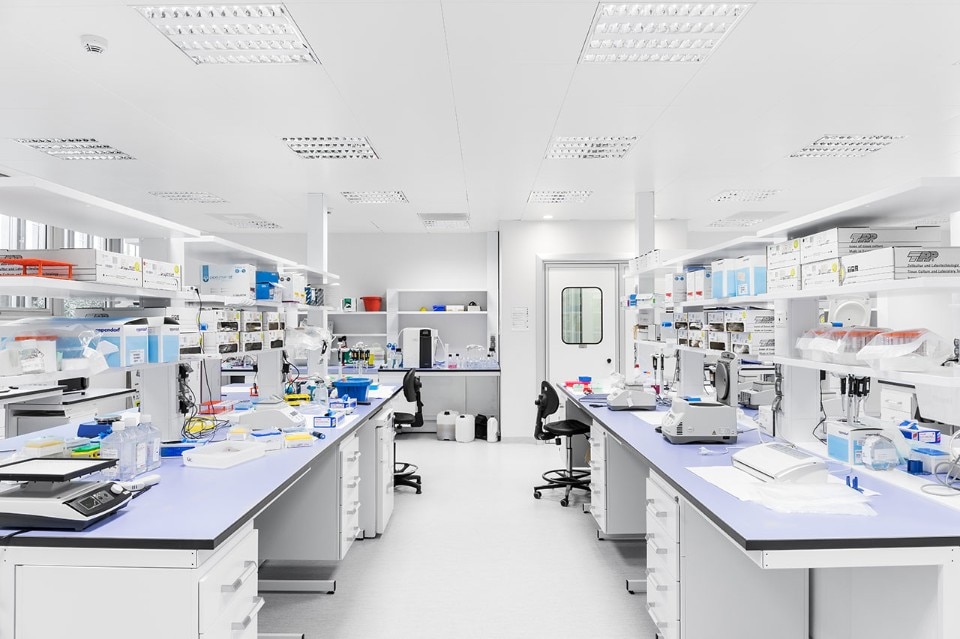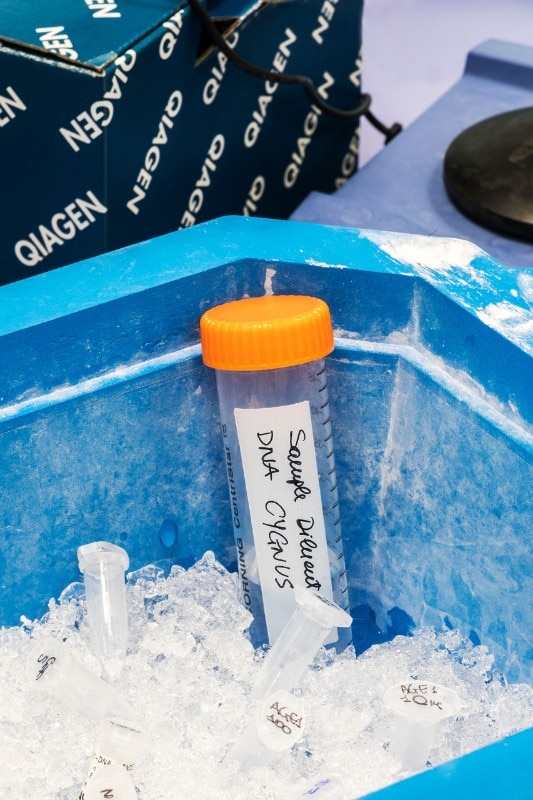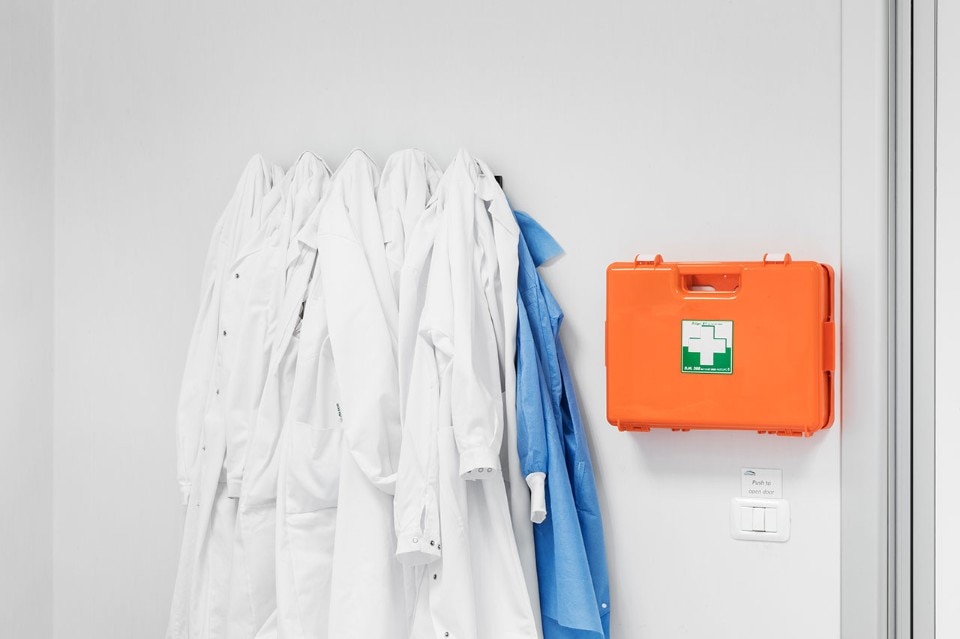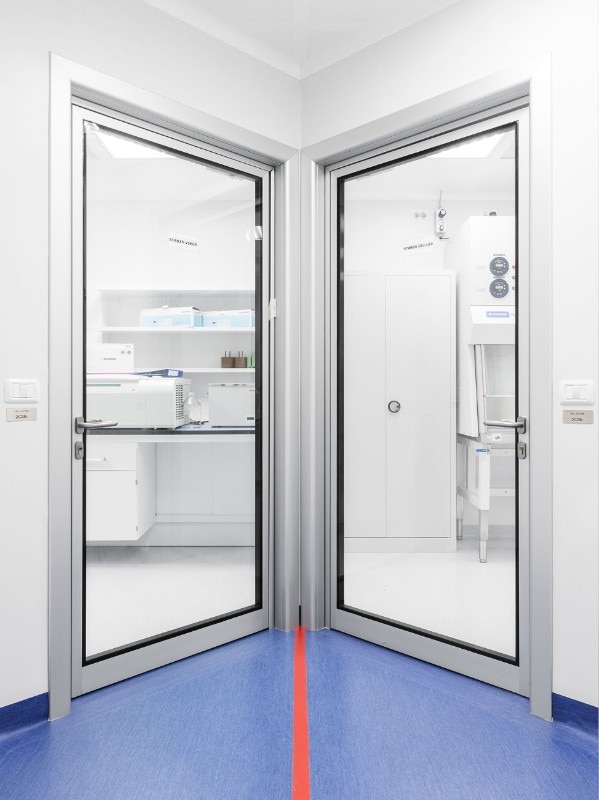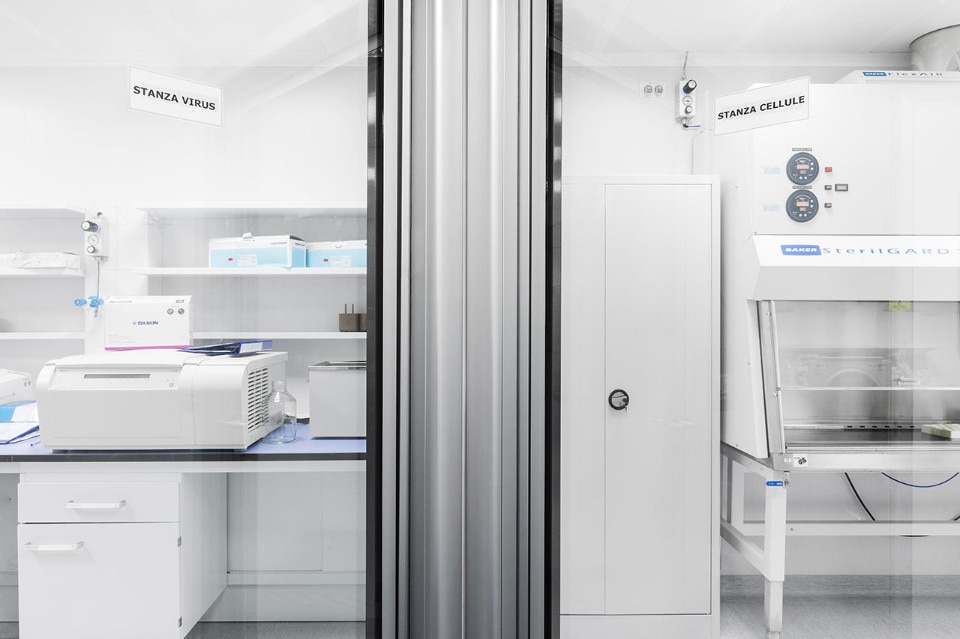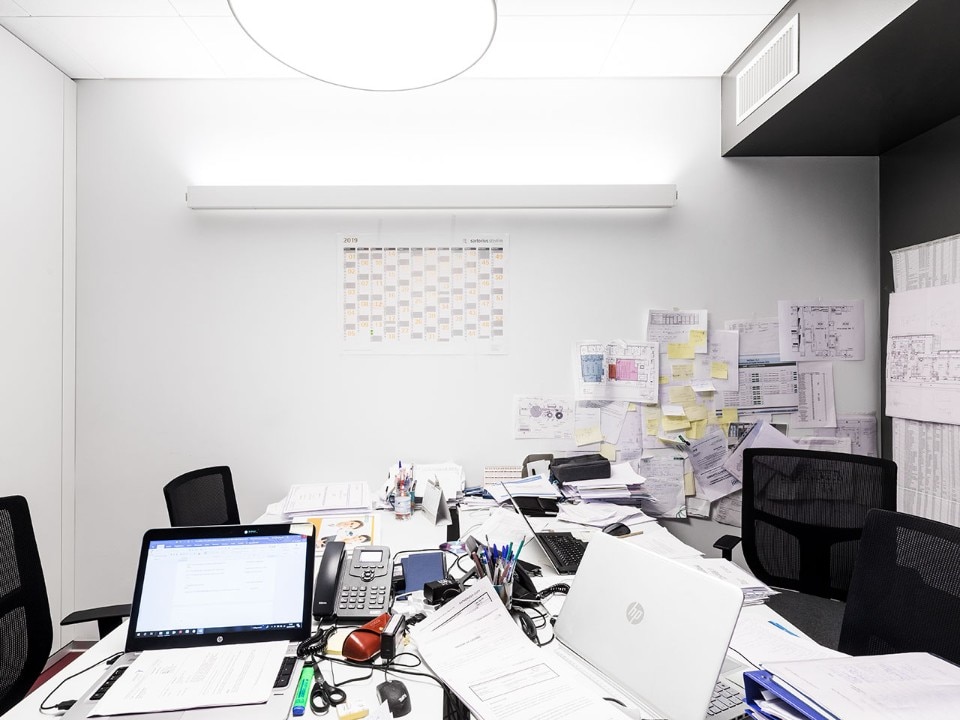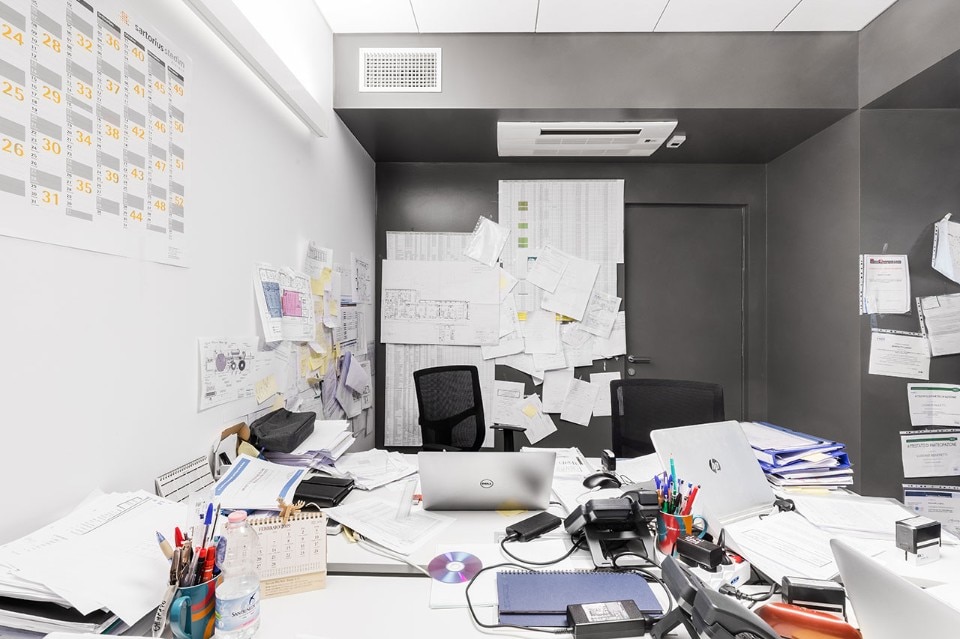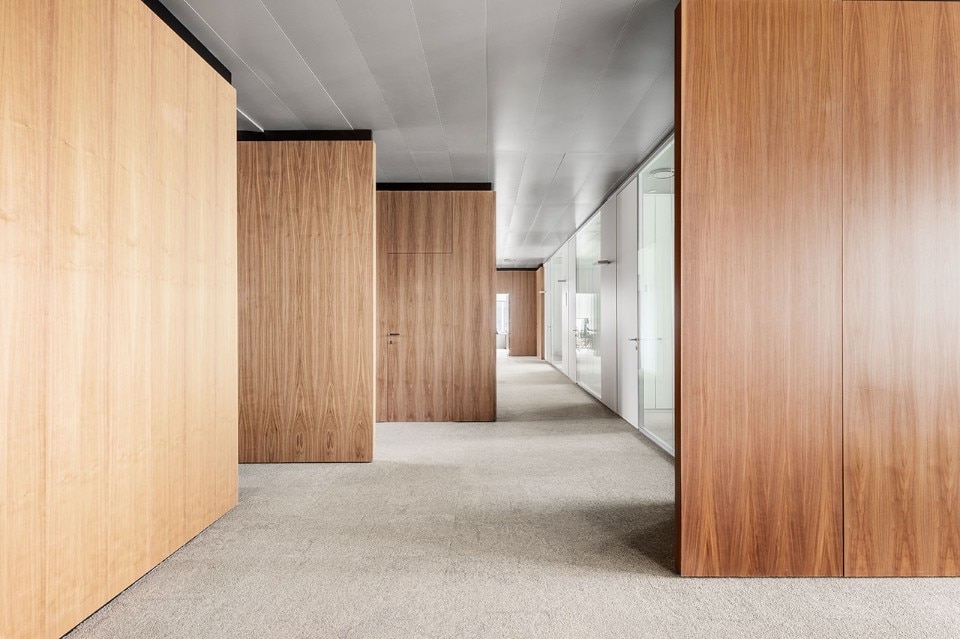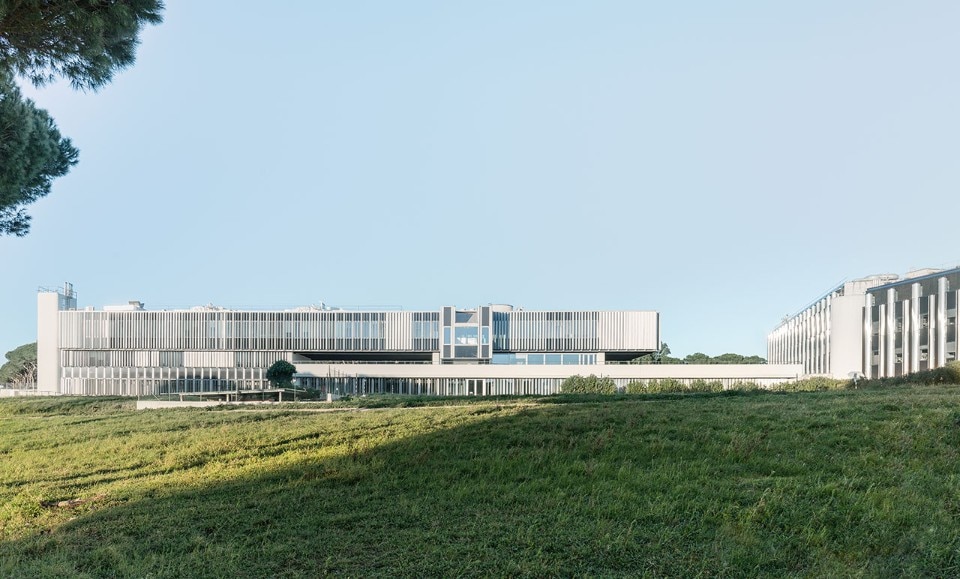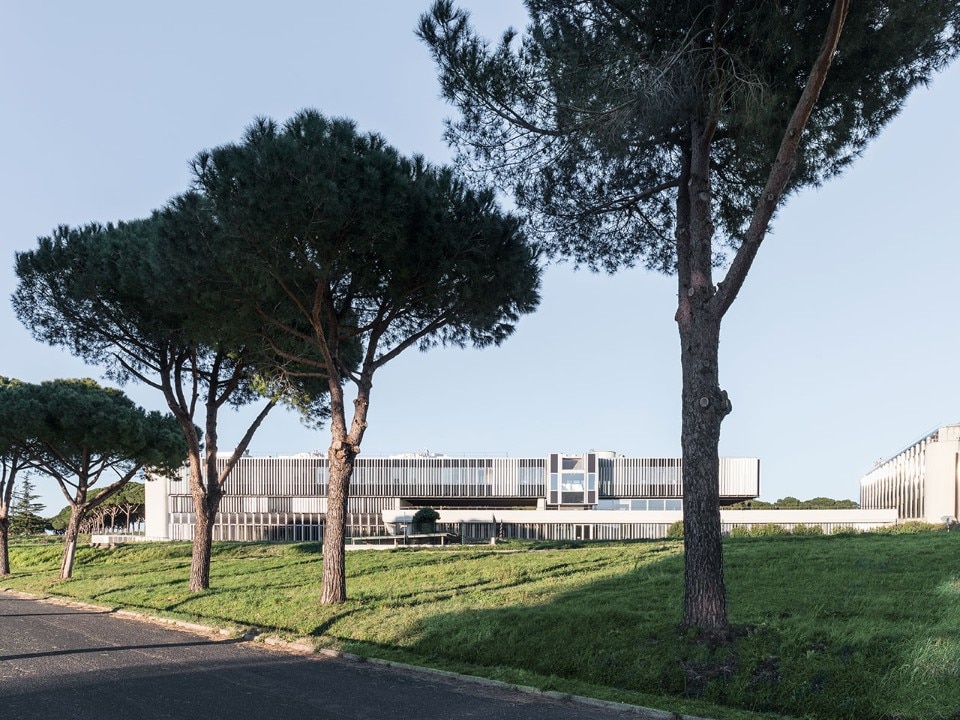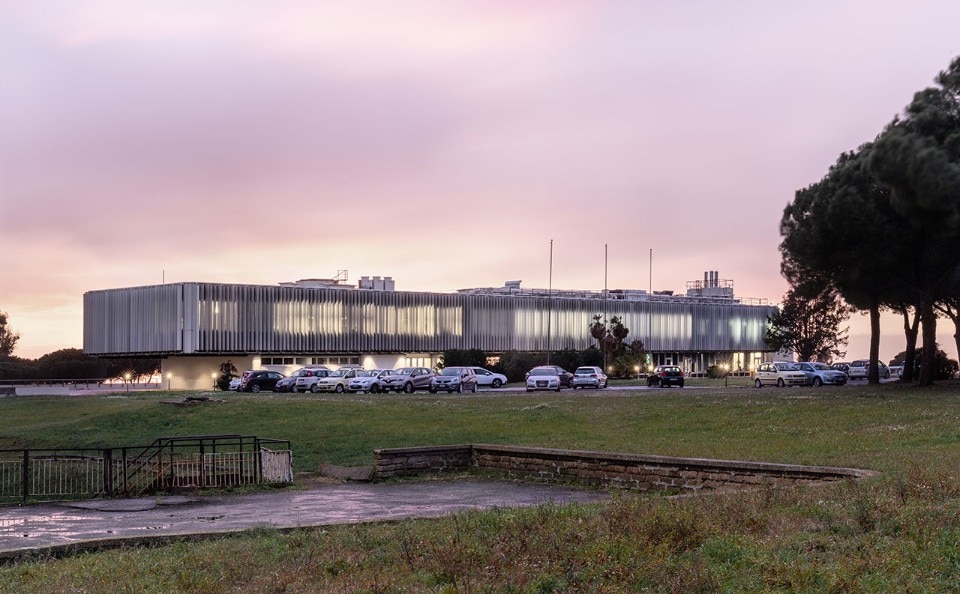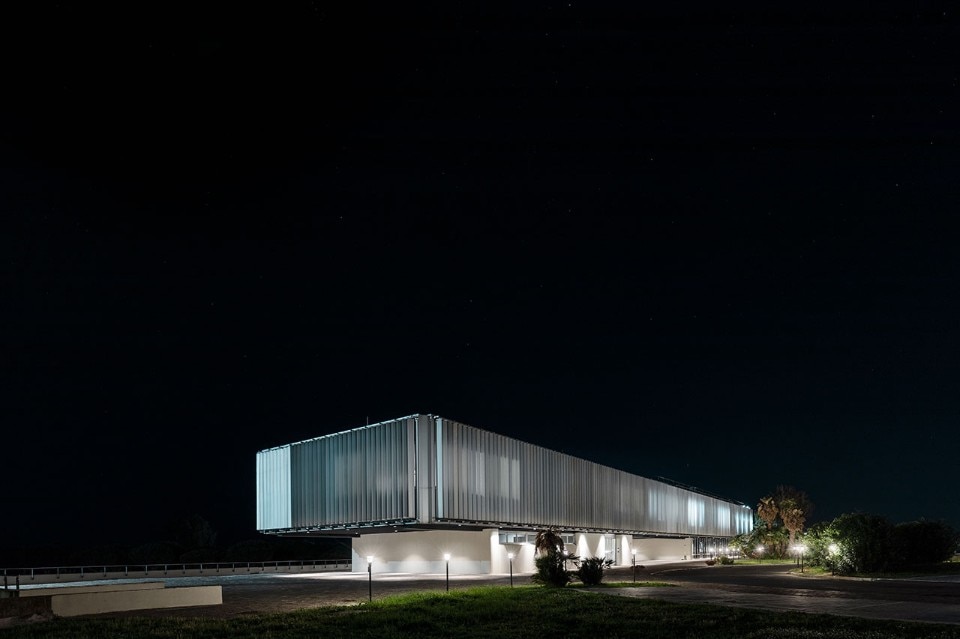Spaces that require a great technical and technological effort do not often appear in architectural writings. This is perhaps precisely because the characteristics of such spaces leave (only apparently) little room for architectural expression. However, this is not the case of Reithera , a biotechnology research and production centre designed by MEPS Energiaeambiente in Castel Romano, a city south of Rome.
The designers say that “in Italy, there is this tendency to conceive these spaces merely in terms of hygienic and environmental requirements. They become so complex that they are most often entrusted to experts in the construction industry, without allowing architecture (intended as the design of a space) to intervene”. Reithera headquarters starts from a completely different premise: professor and scientist Riccardo Cortese – the client, who sadly passed away before seeing the complete building – wanted it to be “a place of community and exchange”.
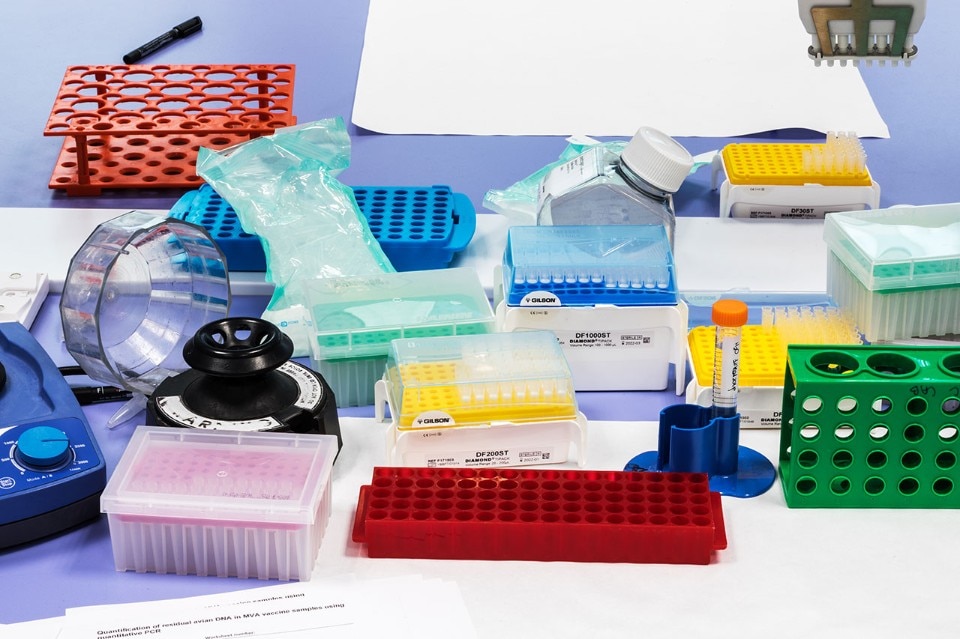
Reithera’s story begins in 2007, when Cortese founded the Okairos startup, a community of scientists-turned-entrepreneurs who managed to develop, among others, the Ebola vaccine. The research centre was turned into a company in 2013 and changed its name to Reithera when it was purchased by GlaxoSmithKline. Today, in the headquarters designed by Susanna Mirza and Alberto Pietroforte, Reithera is working on a vaccine for Covid-19, together with Leukocare (from Munich) and Univercells (from Brussels).
The new Reithera headquarters is nestled in the Technology Park for Medicine in Castel Romano, a place dedicated to cutting-edge technological and scientific research since the 1960s, when it was first designed. The pre-existing building on which the designers worked was built by Finmeccanica in 1966, and it mainly consisted of offices.
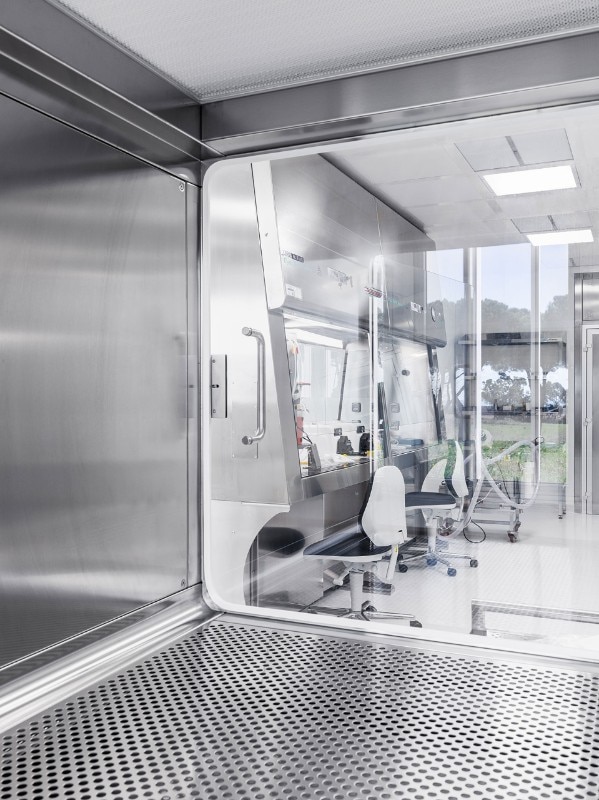
On the building “there was a second order constraint,” Susanna said, “which meant that the exterior had to be preserved”. The designers were faced with a further problem involving the energy performance of the building, which was built “in a technologically innovative way for those years, with spans of 20 metres and overhangs of almost 7, but which” continues Alberto “conceptually were linked to the 1960s, a time when it was thought that resources were unlimited and the energy performance of a building wasn’t such an important issue as it is today”. The twofold objective of Susanna and Alberto was therefore to “provide adequate contemporary performance quality while preserving the original image of modern construction”.
For this reason, the restoration of the facades played an important role in the project. Here, the aluminum slats of the outer curtain wall and the windows behind it were recovered, as well as the brise-soleil, which the designers decided to automate in order to ensure greater comfort in the rooms. The interiors, on the other hand, had to be almost completely dismantled, and what was coherent with the activities of the science centre was recovered with great attention. Then, they decided to furnish the offices with carpeting and Italian walnut wood paneling in order to maintain a language in tune with the original one of the building. Laminates and PVC were used in the two different kinds of labs, since they had to be sterile.
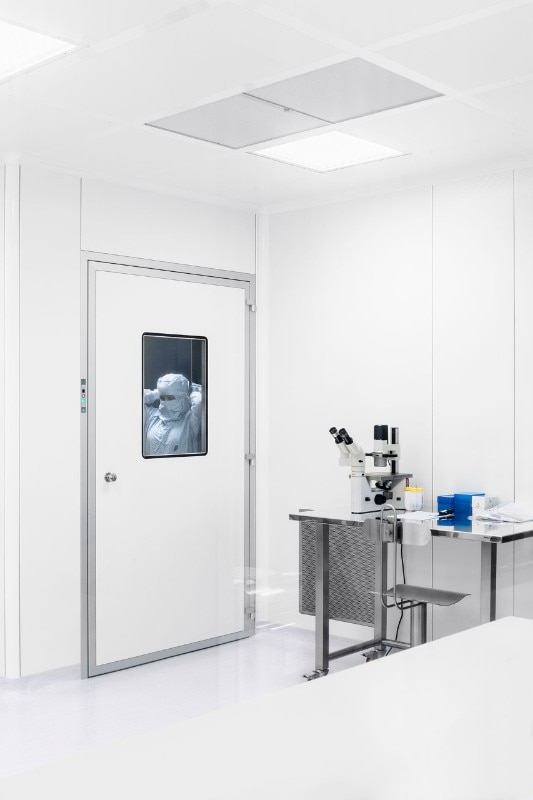
The new functions were then divided into four levels. The designers say that the biggest challenge was the GMP (Good Manufacturing Practice) production area, “which is the sterile drug and vaccine production laboratories that have construction and maintenance costs that, compared to a normal building, are always ten times more expensive. This is because the safety standards of these laboratories must be very high in order to be certified: “we have conceived it as a spaceship, a place completely sealed off from the surrounding environment”.
To enter these environments - where “the medicine molecules are produced” – you go through three changing rooms “because humans are a contaminant” where you have to put on suits, shoes, gloves, and even four layers of protection. The nature of these spaces implies the design of thresholds, of a series of paths that are articulated in corridors and passages, characterized by glass surfaces and the use of colour. The floors and ceilings are all connected by ‘shells’ to ensure effective cleaning, the doors and windows frames are all flush with the walls. The seal of this ‘box’, however, is not enough to guarantee sterility because there must be constantly “an average temperature of 19°C and 80 sterile air changes per hour: it only takes 40 seconds to completely replace the air in these rooms”.
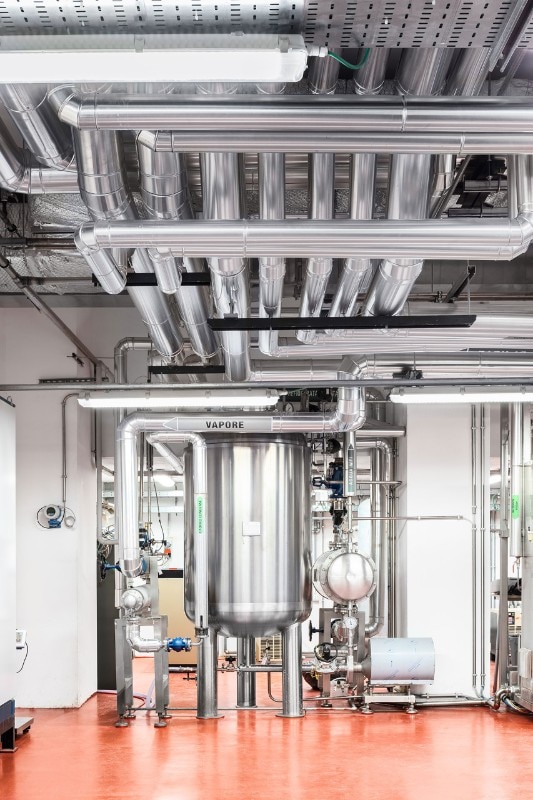
For those who work there, these spaces can become easily alienating. For this reason, the designers have tried to create a relationship as intense as possible between inside and outside, with the park and the sea in the distance. The perception of the passing of the time and the changing of the seasons is very important because “in these environments, worker can easily develop some biorhythm disorders”.
As architects, Susanna and Alberto have tried to preserve the spatial qualities of the building, from the organic inclusion of technical aspects in the architectural design to maintaining visual permeability with the outside world. It’s not these details, but rather the difference between the project intended as a technical resolution of functional needs and the creation of the conditions for the well-being of those who live in a space: “this, or rather the care of people – in addition to the formal issue and the integration between the various aspects of the project – is for us one of the main objectives of an architect’s work”.
Opening image: the work area of the laboratories dedicated to experimental research. Photo essay by Marco Cappelletti with DSL Studio.
- Project:
- Reithera
- Location:
- Castel Romano, Rome
- Program:
- biotechnology research and production laboratories
- Architets:
- Susanna Mirza, Alberto Pietroforte
- Coordination and supervision:
- Marcello Mirza
- Integrated planning, fire prevention, facilities and safety:
- MEPS Energiaeambiente
- Area:
- 7,000 smq
- Completion:
- 2018


